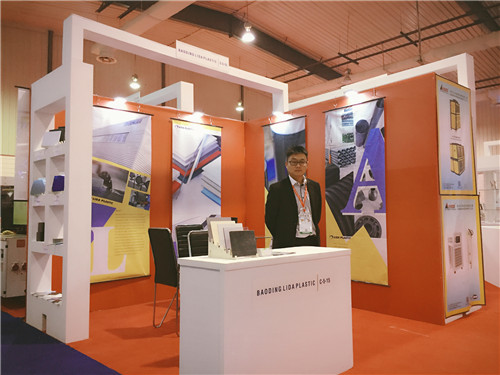Desemba . 13, 2024 09:38 Back to list
dr 11 hdpe pipe
Understanding HDPE Pipes and Their Applications
High-Density Polyethylene (HDPE) pipes have revolutionized the way industries deliver and manage fluids. With benefits ranging from high resistance to pressure and chemicals to longevity and environmental friendliness, HDPE pipes are increasingly favored in various applications. This article explores the features, advantages, and applications of HDPE pipes, particularly focusing on their use within the framework of “dr 11”.
What is HDPE?
High-Density Polyethylene (HDPE) is a versatile polymer known for its high strength-to-density ratio. It is manufactured through the polymerization of ethylene, which is derived from crude oil. HDPE is characterized by its large molecules, which contribute to its durability and resilience. In the context of piping systems, HDPE pipes are used extensively due to their lightweight nature, ease of installation, and ability to withstand high pressures without deformation.
The Significance of DR in HDPE Pipes
The term DR stands for Dimension Ratio, which is a critical factor in the design of HDPE pipes. DR is defined as the ratio of the pipe's nominal diameter to its wall thickness. For instance, a DR of 11 indicates that the pipe's nominal diameter is 11 times its wall thickness. This ratio plays a pivotal role in determining the pipe's stiffness and its capacity to bear internal pressure. A lower DR value indicates a thicker wall and increased strength, making it suitable for high-pressure applications.
Benefits of HDPE Pipes
HDPE pipes offer numerous advantages, making them a preferred choice for various applications. Here are some key benefits
1. Corrosion Resistance Unlike traditional metal pipes, HDPE does not corrode or rust, which significantly prolongs its lifespan. This makes it an ideal choice for environments with corrosive substances.
2. Lightweight and Flexible HDPE pipes are significantly lighter than their metal counterparts, making transportation and installation easier. Their flexibility also allows for bending, making them suitable for various installation scenarios.
3. Cost-Effectiveness Although the initial cost of HDPE pipes may be comparable to other materials, the long-term savings in maintenance and durability lead to a lower total cost of ownership.
dr 11 hdpe pipe

4. Environmental Benefits HDPE is recyclable and can be repurposed, reducing waste. Additionally, its installation often requires fewer resources because it can be laid without extensive excavation.
5. Jointing Techniques HDPE pipes can be joined using various methods, including butt fusion or electro-fusion, creating strong, leak-free joints that enhance system integrity.
Applications of HDPE Pipes
HDPE pipes are utilized across various sectors due to their adaptability and properties. Some prominent applications include
1. Water Supply and Distribution HDPE pipes are widely used in municipal water supply systems. Their durability and resistance to corrosion make them perfect for transporting drinking water.
2. Sewage and Drainage Systems Due to their resistance to chemicals and flexibility, HDPE pipes are a common choice for sewage and drainage systems, providing effective waste management solutions.
3. Irrigation Agriculture benefits from HDPE pipes for irrigation systems, where they provide efficient water delivery, contributing to sustainable farming practices.
4. Oil and Gas Industry HDPE's ability to withstand harsh chemicals and high pressure makes it suitable for transporting oil, gas, and other hazardous materials safely.
5. Telecommunication HDPE conduit pipes are used for protecting sub-surface cables, safeguarding them from environmental damage.
Conclusion
The introduction of HDPE pipes has marked a significant advancement in pipe technology, particularly in applications delineated by their DR ratings, such as DR 11. The combination of their strength, flexibility, and resistance to corrosion, together with their eco-friendly nature, makes them an ideal solution in a variety of sectors. As industries continue to look for sustainable and efficient methods of transporting fluids, HDPE pipes are poised to remain a critical component in modern infrastructure development. Their ability to meet the demands of today while providing a smaller environmental footprint exemplifies their importance in sustainable engineering practices. Understanding their benefits and applications will be fundamental for engineers and industries moving forward into a more sustainable future.
-
HDPE Natural Sheet: Durable, Food-Grade & Versatile Plastic Solutions
NewsAug.27,2025
-
Durable Glossy PVC Rigid Sheet | Premium High-Shine Panels
NewsAug.26,2025
-
Durable PP Rigid Sheet: Lightweight, Chemical Resistant Solutions
NewsAug.21,2025
-
PVC Grey Sheet for Extraction: Chemical Resistant & Durable
NewsAug.19,2025
-
Durable PVC Pipe Fittings for Plumbing & Irrigation Needs
NewsAug.18,2025
-
HDPE Steel Belt Reinforced Spiral Corrugated Pipe | High Strength
NewsAug.17,2025

